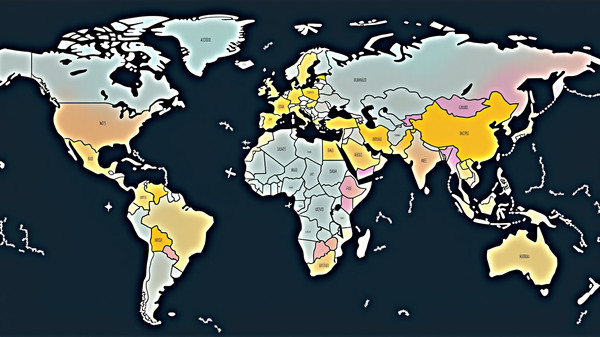Powell's Speech Will Provide Insights on the Future Path of Federal Reserve Interest Rates: How the U.S. Federal Reserve Shapes Economic Outlook

This month, all eyes in the financial world will be on an important speech by U.S. Federal Reserve Chairman Jerome Powell, who will participate in a discussion titled "A Look from the Perspective of the FOMC" at the annual meeting of the National Association for Business Economics in Nashville. The event is scheduled to start at 20:00 Moscow time and attracts the attention of analysts, investors, and economists who are eager for Powell's insights on economic prospects and monetary policy.
Federal Reserve Rate Outlook Remains Uncertain
The September meeting of the Federal Reserve marked a significant milestone in determining the future course of interest rates. The regulator decided to lower the rate by 50 basis points, bringing the federal funds rate down to a range of 4.75%–5.0%. This reduction was anticipated; however, the revised Summary of Economic Projections (SEP) painted a more complex picture.
According to the published dot plot, further cuts are projected, with an additional decrease of 50 basis points in 2024, followed by another 100 basis points in 2025, and an additional 50 basis points in 2026. These projections indicate that the U.S. economy continues to be in a state of uncertainty, and the Fed is prepared to respond to changing economic conditions.
Currently, the CME FedWatch tool shows that markets are pricing in nearly a 50% chance of another 50-basis-point cut at the upcoming meeting in early November. This suggests that investors and analysts are closely monitoring economic indicators that may influence the Fed's decisions.
Last Friday, the U.S. Bureau of Economic Analysis reported that the core Personal Consumption Expenditures (PCE) price index rose by 0.1% month-over-month in August. This figure was below market expectations of a 0.2% increase. This decline further emphasizes the need for careful analysis and possible adjustments to monetary policy in response to changes in inflation and economic conditions.
Fed Officials' Perspectives
Amid recent economic changes, Fed officials have expressed varying opinions regarding the future of monetary policy. In particular, Michelle Bowman, a prominent Fed representative, will speak at 15:50 Moscow time, advocating for a more measured recalibration of policy. She emphasized that risks to price stability remain elevated and must be considered when making decisions.
In contrast, Chicago Fed President Austan Goolsbee took a more dovish stance, stating that interest rates should be significantly reduced. He also noted that "a lot more rate cuts" may be needed next year. This difference in approaches to monetary policy reflects the complexity of the current situation and the necessity to account for both short-term and long-term implications of the decisions made.
Market Expectations
Markets remain in a state of heightened anticipation regarding news from the Fed and the regulator's future actions. Powell's upcoming speech could serve as a crucial indicator for investors, as it may provide clues about the future course of interest rates and economic policy. Given the current economic state and uncertainties surrounding inflation, markets are looking for clear signals regarding the measures that may be taken in response to economic challenges.
The questions raised during the discussion may range from inflation forecasts to expectations regarding employment and economic growth. As a key figure in shaping monetary policy, Powell has the opportunity to clarify the current situation and provide recommendations for the Fed's future actions.
Conclusion
Jerome Powell's forthcoming discussion at the Nashville conference will be a pivotal event in shaping U.S. economic policy. Considering current trends and expectations, it can be anticipated that his speech will significantly influence financial markets and the overall direction of the economy. Investors and analysts will be closely watching his remarks to gain a better understanding of how the Fed plans to navigate uncertainty and economic challenges.





